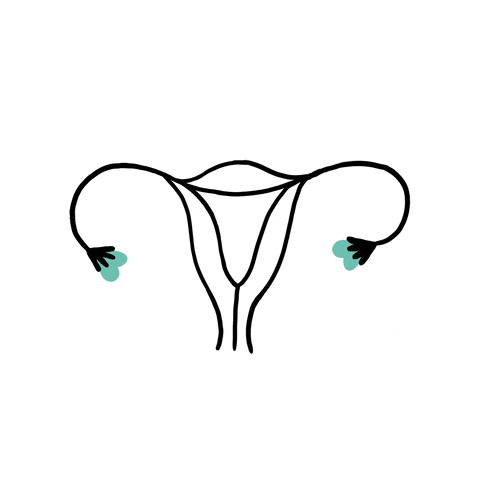
Ovarian cancer is a type of cancer that first forms in the ovaries. It is the third most common cancer seen in women in India after cervical and breast cancer. The incidence of this disease in India is 7 to 9 out of 100,000 women per year. In India, 23,000-25,000 new cases of ovarian cancer are diagnosed every year.
Since September is Ovarian Cancer Awareness month, we thought we should try getting a better understanding of this disease, along with expert guidance and inputs. So, we got in touch with Dr Yogesh Kulkarni to know the risk factors, symptoms, treatments and the facts related to ovarian cancer. Dr Kulkarni is the Consultant Gynecological Oncology at Kokilaben Dhirubhai Ambani Hospital and Research Centre in Mumbai. Scroll down to read all that you need to know about ovarian cancer.
1. Risk Factors For Ovarian Cancer
85-90% of ovarian cancer patients are more than 40 years of age with the peak incidence between 55-65 yrs of age. The risk factors for ovarian cancer include:
- A family history of cancer: Women who have first-degree relatives (mother/sister/daughter) diagnosed with ovarian cancer are at an increased risk. Also, women with a family history of cancer of the breast, uterus, colon, or rectum may also have an increased risk of ovarian cancer. If several women in a family have ovarian or breast cancer, especially at a young age, this is considered a strong family history.
- Personal history of cancer: Women with a personal history of breast/colon cancer are at an increased risk of developing ovarian cancer.
- Infertility: Women who have never been pregnant are at an increased risk.
- Women who have never breastfed are at an increased risk.
- Hormone replacement therapy over a long time has also shown to increase the risk of ovarian cancer.
2. Screening Method For Ovarian Cancer
Various studies have evaluated the role of screenings in ovarian carcinoma. Currently, there are no recommendations to screen all omens and screenings with Transvaginal ultrasound and CA125 levels are being used in women with strong personal or family history, and those who are at high risk for developing ovarian cancer.
3. Symptoms Of Ovarian Cancer
There are no specific symptoms of ovarian cancer. Majority of the women show:
- Vague symptoms like indigestion, constipation, nausea or vomiting
- Distension of abdomen
- Palpable mass in the abdomen
- Heaviness in abdomen
4. Stages Of Ovarian Cancer

Ovarian cancer is divided into four stages depending on the extent of spread. In Stage I/ II, the cancer is confined to the pelvis (lower abdomen) while in stage III/IV, it has spread to the upper abdomen or the chest. Almost 65-70% of ovarian cancer is diagnosed at an advanced stage (III/IV) where cancer has spread outside the pelvis and the tumour deposits are found in the abdominal cavity. This is because of the lack of specific symptoms and an effective screening method. So, by the time the patient actually develops symptoms, cancer has already spread in the abdomen.
5. Treatment Of Ovarian Cancer
The majority of ovarian cancer patients require surgery and chemotherapy. The decision to perform surgery first is based on the Imaging findings (CT scan or MRI). Majority of the patients are offered surgery first but if the disease is very advanced and surgery is not possible, in such a situation, giving chemotherapy first can be considered. 60-70% of cases of ovarian cancers can be operated first.
Surgery for ovarian cancer
It is important to know that the aim of ovarian cancer surgery is to remove all disease that is seen or felt during surgery as the survival of patients is based on the quality of surgery. In order to achieve this goal, the surgery includes the removal of uterus, ovaries, omentum, or lymph nodes. Also, if during the surgery, any tumour deposits are noted, they are removed. This may also include removal of part of the large or small intestine, liver and/ or spleen. The surgery in certain cases can be very extensive, but that is vital and the most important part of treatment.
Chemotherapy
Chemotherapy is an equally important part of ovarian carcinoma treatment. Almost 80-90% of patients require chemotherapy after surgery. The decision to administer chemotherapy is taken after evaluating the final histopathology report, and all women who are categorised as ‘high risk’ need chemotherapy after surgery.
6. What are the survival rates after ovarian cancer treatment and what factors decide survival?

The survival rates depend on the stage at the time of diagnosis. It ranges from 85-90% at stage I to 15-20% at stage IV. Overall five-year survival rates for ovarian cancer ranges from 30-45%.
The survival of women with ovarian carcinoma is dependent on various factors such as:
- The Stage
- Tumour type or grade
- Whether the tumour has been removed intact. This is particularly of importance in the early stages where tumour spillage at the time of surgery can impact survival.
- Whether all the disease has been removed at the time of surgery (for advanced ovarian cancer). Survival of patients with advanced ovarian carcinoma is impacted by the amount of disease left at the end of the operation.
- Response to chemotherapy
- Overall health and age of patients
7. Common Myths Related to Ovarian Cancer—Busted

- Myth: All women diagnosed with ovarian cancer have a strong family history.
Fact: Only 5-10% of ovarian cancers patients are due to hereditary factors. Rest of the cases do not have a strong family/personal history of cancers. - Myth: Pap smear can detect ovarian cancer.
Fact: Pap test is for diagnosing cervical cancer and ovarian cancers are not diagnosed by a pap test. - Myth: Women who underwent a hysterectomy do not get ovarian cancer.
Fact: During a hysterectomy, a surgeon removes the uterus and usually the cervix. In some cases, the fallopian tubes and ovaries are removed. If one or both ovaries are left intact, ovarian cancer is possible. There’s a very small chance of the disease, even when the ovaries are removed. - Myth: Raised CA125 always indicates ovarian cancer
Fact: CA125 is a nonspecific marker not to be used alone in the diagnosis of ovarian carcinoma. Elevated CA125 levels can be found in many noncancerous conditions like fibroids, endometriosis, tuberculosis, benign ovarian cysts, etc. Also, many patients with ovarian cancers will have normal CA125 levels. Hence, no decision should be based on only CA125 levels. More important than the CA125 levels is the radiologic imaging of the abdomen and pelvis with ultrasound, MRI or CT scan.
What would you like to understand about ovarian cancer? Please share it with us in the comments below!
Join Malini’s Girl Tribe on Facebook to be a part of more such conversations!

